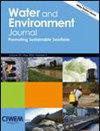不断变化的土壤特性影响印度西北部干旱地区以污水为主的河道沿岸的植被多样性
IF 1.8
4区 环境科学与生态学
Q4 ENVIRONMENTAL SCIENCES
引用次数: 0
摘要
改善以污水为主的季节性河流的环境质量是维持干旱地区生命的一项根本性挑战,人们利用受污染的水生产食物,最终在食物链中累积。为避免环境恶化和健康风险,需要防止进一步污染并进行植物修复。本研究旨在分析拉贾斯坦邦西部卢尼河、班迪河和乔贾里河沿岸五个地点受污水影响、河边和未受污染(对照)的微生境的水质及其对土壤和植被的影响。对土壤和水样进行了采集和分析,并对植被进行了记录。河水的 pH 值(7.60-8.60)、电导率(EC;2.45-38.20 dS m-1)、总溶解固体(TDS;1.26-30.86 g L-1)、碱度(24.0-250.0 mg L-1)和 Na(1.钾(29.0-1100.0 毫克/升)、钙(136.0-3800.0 毫克/升)和锰(0.05-83.92 毫克/升)浓度,以及较低的 NH4-N、NO3-N、PO4-P 和重金属浓度。物种数量在 Luni 沿岸 32 种和 Jojari 沿岸 20 种之间。班迪河的土壤 pH 值、EC 值、PO4-P 和灌木丰富度(R)、多样性(H′)和均匀度(e')最高,而乔贾里河的 NH4-N、NO3-N、K 和树木 R 和 H′最高。下游土壤变量减少,植物多样性增加。镉、锌、铬、铜和铅的浓度在 Salvadora persica 和 Prosopis juliflora 的叶片中超过了可接受的限度。主成分分析(PCA)显示,河水、土壤和植被的不同变量与 11 个 PCA 轴之间存在显著关系。结论是,工业废水对水、土壤和河流生态产生了负面影响。受污水影响的土壤盐度较高,耐盐物种的适应多样性较低,这些互补效应有助于恢复被改变的生态系统和城市绿化。尽管人们在灌溉中使用了被污水污染的水,但应采取预防措施,以避免对环境和人畜健康造成危害。本文章由计算机程序翻译,如有差异,请以英文原文为准。
Changing soil properties influenced vegetation diversity along effluent‐dominated river courses in dry areas of north‐western India
Improving the environmental quality of effluent‐dominated seasonal rivers is a fundamental challenge for sustaining life in drylands, where people utilize contaminated water to produce food, which ultimately accumulates in the food chain. Preventing further contaminations and phytoremediation are needed to avoid environmental degradation and health risks. This study aimed at analysing water quality and its impacts on soil and vegetation at effluent‐impacted, river‐edge and non‐polluted (control) micro‐habitats at five sites along Luni, Bandi and Jojari Rivers each in western Rajasthan. Soil and water samples were collected and analysed, and vegetation was recorded. River water exhibited high pH (7.60–8.60), electrical conductivity (EC; 2.45–38.20 dS m−1 ), total dissolved solid (TDS; 1.26–30.86 g L−1 ), alkalinity (24.0–250.0 mg L−1 ) and Na (1.50–30.00 g L−1 ), K (29.0–1100.0 mg L−1 ), Ca (136.0–3800.0 mg L−1 ) and Mn (0.05–83.92 mg L−1 ) concentrations and low NH4 ‐N, NO3 ‐N, PO4 ‐P and heavy metals. Species numbers ranged between 32 along Luni and 20 along Jojari. Soil pH, EC, PO4 ‐P and shrub richness (R), diversity (H′) and evenness (e') were highest for Bandi, whereas NH4 ‐N, NO3 ‐N, K and tree R and H′ were highest for Jojari River. Soil variables decreased and plant diversity increased downstream. Concentrations of Cd, Zn, Cr, Cu and Pb were above the acceptable limit in leaf of Salvadora persica Prosopis juliflora
求助全文
通过发布文献求助,成功后即可免费获取论文全文。
去求助
来源期刊

Water and Environment Journal
环境科学-湖沼学
CiteScore
4.80
自引率
0.00%
发文量
67
审稿时长
18-36 weeks
期刊介绍:
Water and Environment Journal is an internationally recognised peer reviewed Journal for the dissemination of innovations and solutions focussed on enhancing water management best practice. Water and Environment Journal is available to over 12,000 institutions with a further 7,000 copies physically distributed to the Chartered Institution of Water and Environmental Management (CIWEM) membership, comprised of environment sector professionals based across the value chain (utilities, consultancy, technology suppliers, regulators, government and NGOs). As such, the journal provides a conduit between academics and practitioners. We therefore particularly encourage contributions focussed at the interface between academia and industry, which deliver industrially impactful applied research underpinned by scientific evidence. We are keen to attract papers on a broad range of subjects including:
-Water and wastewater treatment for agricultural, municipal and industrial applications
-Sludge treatment including processing, storage and management
-Water recycling
-Urban and stormwater management
-Integrated water management strategies
-Water infrastructure and distribution
-Climate change mitigation including management of impacts on agriculture, urban areas and infrastructure
 求助内容:
求助内容: 应助结果提醒方式:
应助结果提醒方式:


